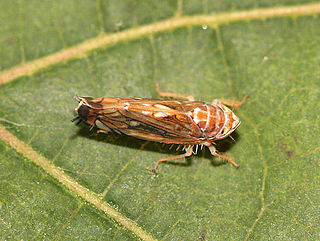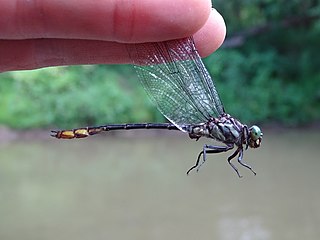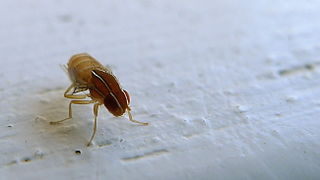 W
WAcizzia uncatoides is a species of psyllid native to Australia where it feeds primarily on Acacia and some Albizia species. It is present in many parts of the world where it infests these plant species, presumably introduced with the plants. It is not generally regarded as a pest species although it can proliferate to high numbers. Generalist psyllid predators also feed on this species.
 W
WAustroicetes vulgaris is a grasshopper in the genus Austroicetes. It is sometimes a pest in Tasmania, and can also be found in Northern Territory, Australia.
 W
WHeterocloeon amplum is a species of small minnow mayfly in the family Baetidae. It is found in Central America, North America. In North America its range includes northern Mexico, the southern, and northeastern United States.
 W
WLeptanilla swani is a species of ant in the genus Leptanilla. Described by William Morton Wheeler in 1932, the species is endemic to Australia, and the only species of the genus Leptanilla to be found there. Workers are pale in colour, measuring 1.3 to 5 millimetres while queens are larger at 2 millimetres (0.079 in) long.
 W
WMegachile atrocastanea is a species of bee in the family Megachilidae. It was described by Alfken in 1932.
 W
WRhagoletis mendax is a species of tephritid fruit fly known by the common name blueberry maggot. The blueberry maggot is closely related to the apple maggot, a larger fruit fly in the same genus. It is a major pest of plant species in the Ericaceae family, such as blueberry, cranberry, and huckleberry. The larva is 5 to 8 mm long, apodous, and white with chewing mouthparts. Female adults are 4.75mm in length, males are slightly smaller. Both adults are mostly black in color with white stripes, orange-red eyes, and a single pair of clear wings with black banding. The adult female fly lays a single egg per blueberry, and when the larva hatches it consumes the fruit, usually finishing the entire berry in under 3 weeks and rendering it unmarketable. The larva then falls to the soil and pupates. Adult flies emerge, mate, and females oviposit when blueberry plants are producing fruit. Each female fly can lay 25 to 100 eggs in their lifetime.
 W
WScaphoideus atlantus is a species of leafhopper in the family Cicadellidae.
 W
WScaphoideus titanus, or the American grapevine leafhopper, is an insect of the leafhopper family (Cicadellidae) which feeds on various plants of the family Vitaceae. Native to North America, it was introduced by accident to Europe where it has become a pest by acting as a vector of the grapevine phytoplasma disease flavescence dorée.
 W
WStylurus laurae, or Laura's clubtail, is a species of clubtail in the family of dragonflies known as Gomphidae. It is found in North America.
 W
WTapinoma modestum is a species of ant in the genus Tapinoma. Described by Santschi in 1932, the species is endemic to Benin and Zimbabwe.
 W
WZaprionus tuberculatus is a member of the subgenus and genus Zaprionus, family Drosophilidae, and order Diptera. It is an invasive fruit fly that originated in Africa, but can also be found in Europe and Asia. The fly earned its common name, the "vinegar fly", because researchers frequently captured the species using vinegar traps. Z. tuberculatus was previously considered a strictly tropical fly, but evidence of invasion to nontropical regions such as Turkey has been shown.